Collards are part of the leafy greens category of green vegetable crops, along with Mustard Greens, Kale, Bok Choy, Turnip Greens, and others, as the address itself is part of the plant that is eaten. One of the keys to growing healthy Collard Greens is knowing what type of fertilizer and how to use it. Collard Greens needs moderate amounts of fertilizer. Soil examination is always the best way to determine the fertilization needs of the crop. Let’s check out the best fertilizer for Collard Greens.
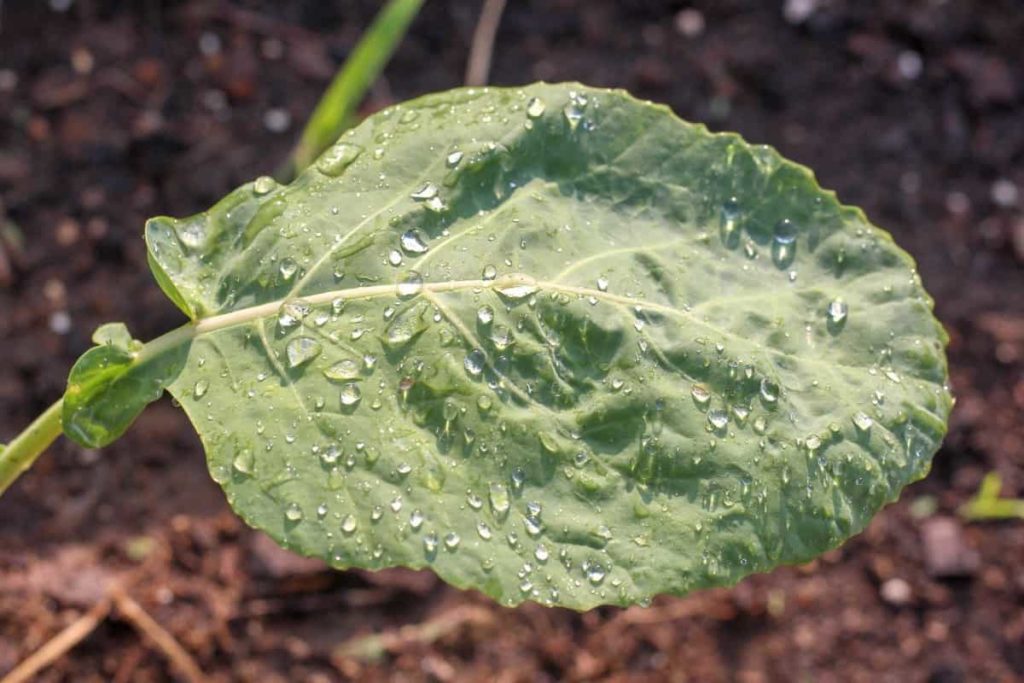
Collard is considered as medium feeders, which means they have moderate nutritional needs but farmers often need to use fertilizer to ensure Collared green health. Collard needs more nitrogen than any other growth nutrient. If your soil is severely deficient in nutrients, adding manure, compost, or garden soil at the rate of 1 kg per 100 square feet can bring the earth towards proper fertility. Apply pre-plant fertilizer as per soil testing recommendations.
Broadcast the fertilizer evenly and add it to the soil by tilling or discing it to a depth of about 6 inches. Working as a fertilizer in the soil ensures that nutrients are available to plants at the time of seed or transplant. Collards are mainly grown for their large, edible leaves, and require a steady supply of nitrogen to produce a continuous flush of growth. Without the availability of proper nutrition, growth will stop or result in pale green or yellow foliage.
Best fertilizer for Collard Greens
Homemade fertilizers for Collard Greens
Coffee grounds
Collard plants prefer somewhat acidic soil with a pH between 6.0 and 6.8. Applying the used coffee grounds and lime around your plants as mulch helps to add nitrogen to the soil and reduce the pH a little.
In case you miss this: Growing Collard Greens, Planting, Care, Harvesting
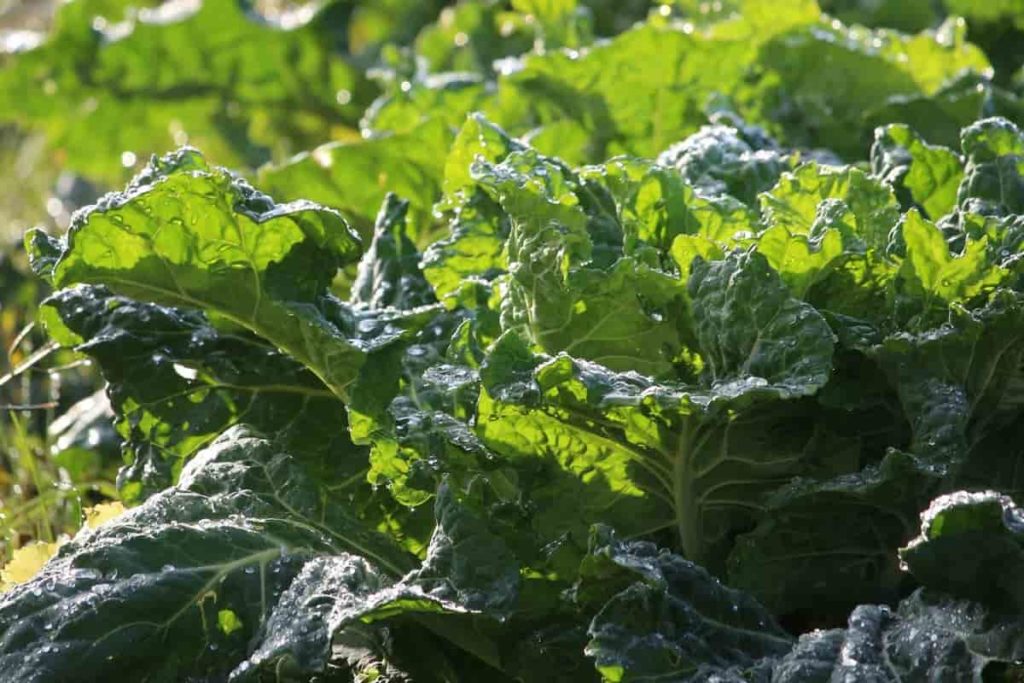
Wood ash
You can use wood ash around alkaline-loving crops such as Artichoke, Collard Greens. Place the ash in a line of a few inches from the trunk around the base of the plant, do not sprinkle wood ash on plant leaves or trunks.
Epsom salt
Usually, the rate of 2 tablespoons of Epsom salt per gallon of water is recommended. Farmers need to apply it multiple times to make an impact.
Compost manure for Collard Greens
Well-rotten manure
Improve your soil by adding well-rotted manure or compost in spring or fall. Do not use fresh manure as it can contain harmful bacteria and increase weed problems. If soil is mostly clay or light sand, add organic matter. A 4-inch layer of compost is sufficient. Spread compost to plantation area before digging. Chicken manure increases the yield and the quality of the Collard Greens.
Organic fertilizers for Collard Greens
Fish emulsion and alfalfa meal
Apply a high nitrogen fertilizer to stimulate Collards growth, such as eating fish emulsion and alfalfa meal, when plants are 6 inches long.
In case you miss this: Top 19 Fast Growing Leafy Vegetables in Pots
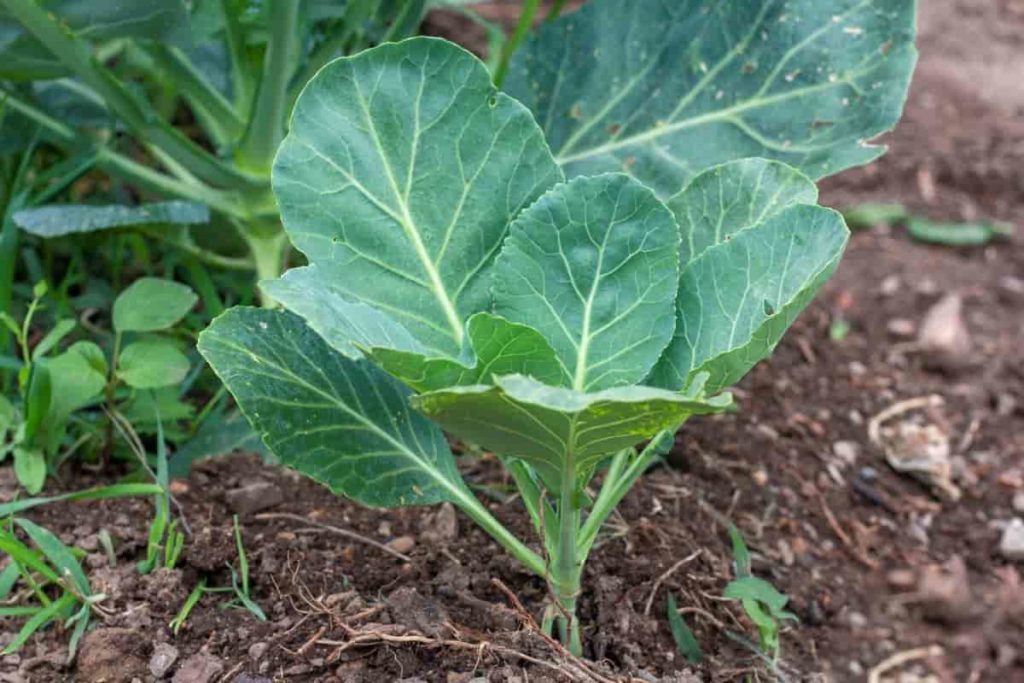
Blood meal
More nitrogen can be added to the soil before planting and rich amendments such as blood meal, or compost.
Kelp meal
Seaweed or Kelp meal makes a great organic modification to the soil of the garden. It is an excellent bio-actor, helping to break down organic matter and make it available to plants to wake up all the bacteria in the earth. It also includes macro and micronutrients, trace elements, and important resources. It is the perfect fertilizer for Collard Greens in containers.
Alfalfa meal
Alfalfa meal provides a good balance of large nutrients i.e., nitrogen, phosphorus, and potassium but also magnesium and sulfur. Organic alfalfa meal is safe to use on herbs, fruit, and vegetable gardens.
Natural fertilizers for Collard Greens
Mulching with organic materials such as untreated grass clippings or straw, allows the soil to remain weed-free and moist in the growing season. You can also throw grass clippings on the soil around the greens. This will also add more nitrogen to the soil. It is better to fertilize before planting seeds and again only if the leaves start turning yellow.
In case you miss this: Top 25 Fast Growing Vegetables in Pots

Liquid fertilizer for Collard Greens
Seaweed extract
If you want big Collard Greens, you can use liquid-seaweed extract foil spray or nitrogen-rich fertilizer sown in the soil after each crop is advised.
Commercial fertilizers for Collard Greens
NPK ratio
Collard is heavy feeders, if your soil is bad, add 1 cup of complete 10-10-10 fertilizer for every 10 feet row before planting. Weekly 1 tablespoon with liquid manure and side-dress 10-10-10 fertilizer per plant or a few shovels compost midseason. Always water well after fertilizing. Once planted, Collard greens have minor fertilizer requirements.
You should use high nitrogen fertilizer, such as nitrate of soda (15-0-0) or calcium nitrate (16-0-0), or garden manure with high concentrations of nitrogen and low phosphorus, such as 27-3-3, 24-0-15, or similar formulations. If Collards are light green or new growth is stopped, and if discoloration and stunting are not the results of pest damage, increase fertilizer applications, as the dark green color of the Collards is primarily the result of nitrogen intake that can take Collard.
The best way to ensure that fertilizers are used for their maximum effectiveness and customize their fertilizer applications according to their soil’s unique fertility conditions as shown by soil fertility tests. Also, avoid buying any fertilizer that contains herbicides, even if weeds are a common problem for Collard greens in your area. Avoid the constant use of high concentration fertilizers of phosphorus, as the formation of phosphorus in the soil, can become a major source of water and soil pollution.
Collard Greens fertilizer schedule
Once planted, a side-dress fertilizer application is recommended when plants are about 1/3 of the way to be grown completely. Collard greens require at least eight hours of direct sun every day, but like most greens, they can withstand a little filtered light or five to six hours of direct sun. Just remember that any amount of shade reduces production and leaves become larger and thinner. Plant Collard in rich, well-drained soil. Ideally, up to several inches of organic matter and a full lawn contains 1 kg of manure per 100 square feet of bed or every 35 feet of row.
In case you miss this: Leafy Vegetable Gardening – How To Start, FAQs
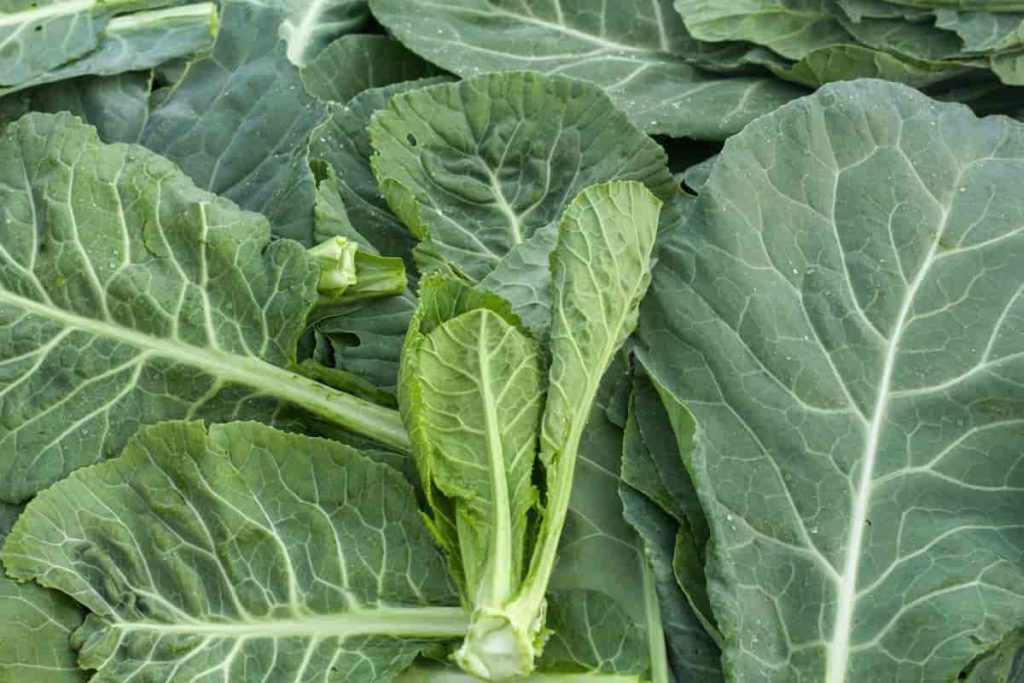
In small plots, 2 teaspoons per square foot or foot of row. Water them thoroughly on half of the water-soluble plant food such as Miracle-Gro. For the best taste and production, they need cool temperatures and high fertility. Two to three weeks after transplant, fertilize them with 1 cup of high nitrogen fertilizer (21-0-0, etc.) for every 35 feet row. Sprinkle half of the fertilizer on each side of the row. Lightly work it in the soil and then water it. Repeat this fertilizing process every three to four weeks to encourage higher yields.
How to fertilize Collard Greens in pots
Late-started Collards produce great falling crops with large leaves and remarkable flavor. The secret to soft, juicy Collard Greens is fast, even growth. Keep soil moisture constant. Add full organic fertilizer before planting and side-dress with monthly fish emulsion to provide the nitrogen needed for quick growth. Collards grow best with too much nitrogen.
Water them repeatedly with half-powered high nitrogen fertilizer, or use a coated, slow-releasing fertilizer once or twice, depending on whether it is three months or 6 months of fertilizer. Remember to take into account nitrogen that may be included in your potting mix. You may not require any extra nitrogen for the first few months.
Frequently asked questions about fertilizers for Collard Greens (FAQ)
Why are my Collards changes to purple color?
When you look at a plant with purple leaves instead of normal green, it is likely due to a lack of phosphorus. All plants need phosphorus (P) to make energy, sugar, and nucleic acid. Some plants may develop phosphorus deficiency if the soil cools down early in the growing season.
In case you miss this: Growing Vegetables In Belgium – Planting Calendar
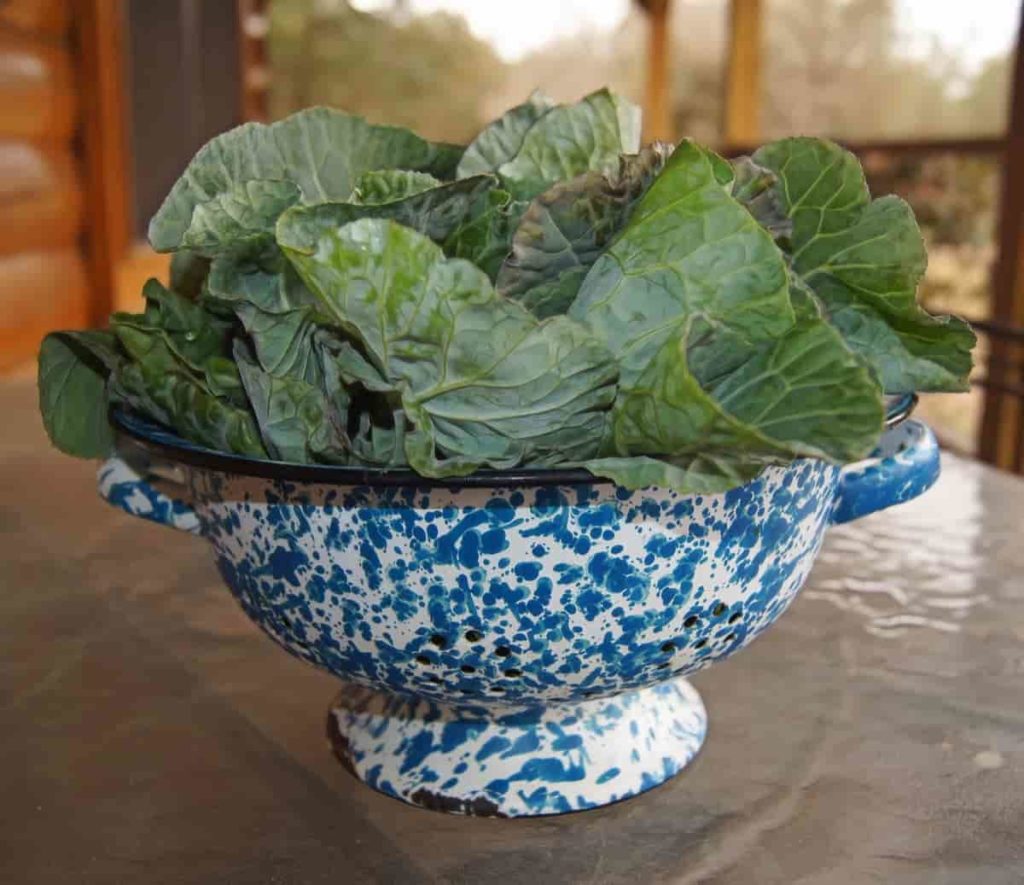
What is a white film on Collard Greens?
White film is part of the normal leaf finish and beauty of the plants.
Why are my Collard plants not growing taller?
Metabolic functions slow down when your plant roots can’t get enough oxygen. In some cases, lack of oxygen can prevent their growth altogether. One common reason for this is to give more water or use substrates with poor drainage.
- Broccoli Seed Germination and Selection
- Asparagus Seed Germination and Variety Selection
- Seasonal Flower Gardening: Best Practices for Spring, Summer, Fall, and Winter
- How to Grow Hibiscus from Flower
- Plantation Ideas for Home Decoration: A Beginners Guide
- Flower Garden Designs and Layouts for Beginners
- Planting and Spacing Techniques in Papaya: A Beginner’s Guide
- Growing Gold: Essential Techniques for Planting Pineapples
- How to Make Kalanchoe Plant Bushy: Home Remedies and Solutions
- 11 Reasons Why Your Gardenia is Not Blooming: Home Remedies and Solutions
- Eco Elegance: The Guide to Designing a Drought-Tolerant Landscape
- Gardening on a Slope: Strategies for Hillside Landscaping
- Nourish and Flourish: Top Organic Mulches for Thriving House Plants
- Everything You Want to Know about Indian Mogra Flower: Discover Uses and Growing
- Green Thumb Success: Expert Tips for Cultivating Greenhouse Pumpkins All Year Round
- Maximize Growth & Flavor: The Ultimate Guide to Companion Planting in Herb Gardens
- How to Control Rhododendron Problems Naturally: Home Remedies and Organic Ways to Fix Them
- Natural Magic: The Remarkable Benefits of Cinnamon for Plants
- Best Steps to Revive Dying Tulip with Natural and Organic Treatment
- 10 Reasons Why Your Angel Trumpet is Not Blooming: Remedies and Treatment
- How to Fix Periwinkle Leaf and Flower-Related Problems: Natural Remedies and Solutions
- How to Fix Zinnias Leaf and Flower Problems: Discover Natural and Home Remedies
- Organic Steps to Induce Lemon Tree Flowers: A Comprehensive Guide
- Bloom Booster: Crafting the Perfect Homemade Bougainvillea Fertilizer
- Optimizing Growth: A Guide to Applying NPK Fertilizer for Potted Plants
- 10 Best Homemade Fertilizers for Rubber Plant: DIY Recipes and Application Method
- How to Boost Female Pumpkin Flowers: Effective Steps for More Flowers and High Yields
- Transform Your Indoor Garden: Top Benefits of Pink Salt for Houseplants
- 10 Best Homemade Fertilizers for Peacock Plants (Calathea): Easy DIY Guide
- Unlock Blooms: 9 Reasons Why Your Potted Chrysanthemum is Not Blooming
- 8 Reasons Why Your Potted Hibiscus is Not Blooming: Fix it with Simple Solutions
- Unlock Blooms: 9 Key Reasons Your Potted Frangipani Won’t Flower
- 10 Reasons Why Is My Ice Plant Not Blooming: Remedies and Treatment
- 10 Reasons Why My Potted Hydrangea Not Blooming: Treatment and Remedies
- 10 Reasons Why is My Wisteria Not Blooming: Remedies and Treatment
- 10 Reasons Why is My Goldfish Plant Not Blooming: Remedies and Treatment